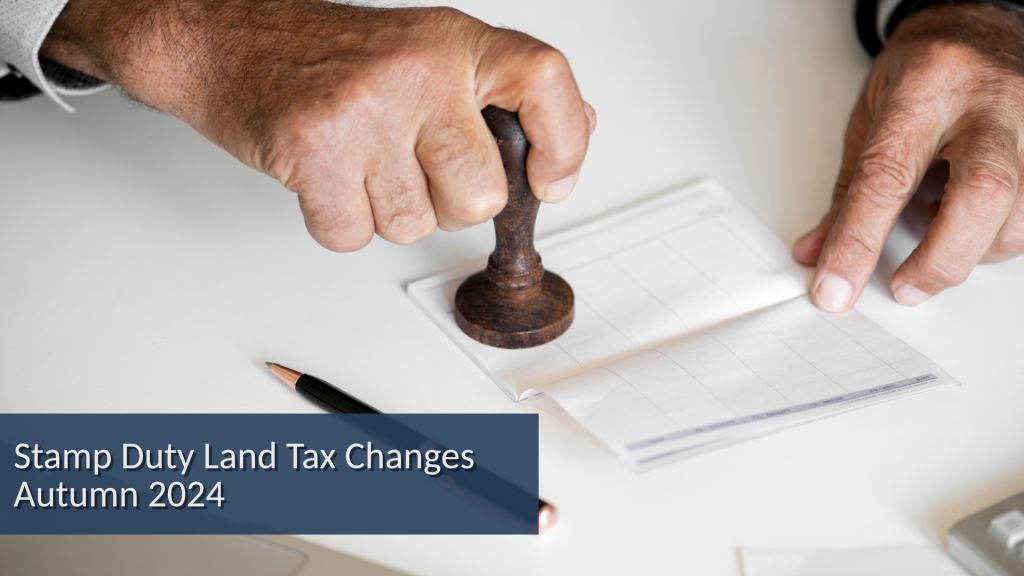Stamp Duty Land Tax (SDLT) is a crucial tax for property buyers in the UK, impacting both residential and commercial property purchases. With changes to Stamp Duty Land Tax in the Autumn 2024 Budget, it impacts investors, developers, and homebuyers. At GoldHouse Accounting, we are commited to helping you navigate these updates to optimise your property investments.
Here’s everything you need to know about SDLT and the latest updates from 2024.
What Is Stamp Duty Land Tax (SDLT)?
Stamp Duty Land Tax is a tax imposed on the purchase of property (both residential and non-residential) and land in England and Northern Ireland. The amount payable differs depending on multiple factors. This includes the property’s purchase price, property type (residential or non-residential) and the buyer’s status (e.g. first-time buyer, investor, company). Buyers only pay SDLT on the portion of the property’s purchase price that falls within each band with varying rates applied to each band. Additionally, for property investors and buyers acquiring second homes, there is an additional surcharge on top of the standard rates.
How SDLT Works: Key Points for Property Buyers
Understanding SDLT rates and thresholds is essential for any property transaction. Here’s a basic breakdown of how SDLT is applied:
- First-Time Buyers: Benefit from SDLT relief, meaning they don’t pay any SDLT on the first £425,000 of a property purchase as long as the property value doesn’t exceed £625,000 – (Changed in the budget: See Below).
- Residential Property Rates: Standard SDLT rates range from 0% for properties up to £250,00 for residential properties, to 12% for portions over £1.5 million.
- Additional Property Surcharge: For buyers purchasing additional properties (e.g., second homes or buy-to-let investments), a surcharge applies on top of the standard SDLT rates – (Changed in the budget: See Below).
- Non-Residential Property Rates: SDLT rates on non-residential properties and mixed-use properties range from 0% up to £150,000 to 5% on portions over £250,000.
Accurately calculating SDLT can help in budgeting and cash flow planning.
Changes to SDLT in the Autumn 2024 Budget
The Autumn 2024 Budget introduced several updates impacting SDLT, particularly focused on residential property transactions and support for first-time buyers. Here are the key changes:
Increase in Surcharge for Additional Properties
Effective from 31st October, the surcharge for additional residential properties and purchases by companies increased from 3% to 5% above standard rates. This means investors and companies face higher SDLT costs on additional property acquisitions.
Increased SDLT Relief for First-Time Buyers
From 1st April 2025, the SDLT relief threshold for first-time buyers will decrease from £425,000 to £300,000. First-time buyers should expedite purchases to benefit from the current relief before the April 2025 adjustment.
How to Calculate SDLT with the Updated Rates
With these new thresholds, calculating SDLT can be complex, especially for investors and those buying multiple properties or commercial investments.
Here’s an example for a residential property purchase at £600,000 as a second home in England:
- Standard SDLT
- 0% on the first £250,000 = £0 (from the 1st April 2025 £250,000 £0 band will decrease to £125,000)
- 5% on the next £350,000 = £17,500
- Additional Property Surcharge
- 5% on the entire £600,000 = £30,000
Total SDLT payable: £17,500 (standard) + £30,000 (surcharge) = £47,500
For complex cases involving mixed-use properties or first-time buyer relief, using a detailed SDLT calculator or working with a tax specialist like Goldhouse Accounting can help ensure accuracy.
SDLT Planning Tips for Investors and Buyers
With SDLT impacting every property purchase, effective planning can help minimise liabilities and optimise investment returns. Here are a few tips:
- Timing: consider completing purchases before rate increases take effect.
- Reliefs and Exemptions: explore available reliefs, such as those for first-time buyers or multiple dwellings.
- Professional Guidance: consult with tax advisors that specialise in property to assist with developing strategies tailored to your investment goals.
Planning is key when it comes to SDLT, especially for high-value transactions or additional property purchases. As well as getting specialist advice to navigate the complexities and optimise tax outcomes.
Conclusion
The Autumn 2024 Budget’s several changes to Stamp Duty Land Tax significantly impact property transactions. At GoldHouse Accounting, we specialise in guiding property investors and developers through these complexities to achieve tax efficiency. For more information on SDLT and property investment strategies, follow us on our social media or you can visit our free resources.
If you’re considering a property purchase and want to ensure you’re making the most tax-efficient decisions, contact Goldhouse Accounting. Our experts can help you understand SDLT obligations, explore relief options, and plan effectively for your next investment.




